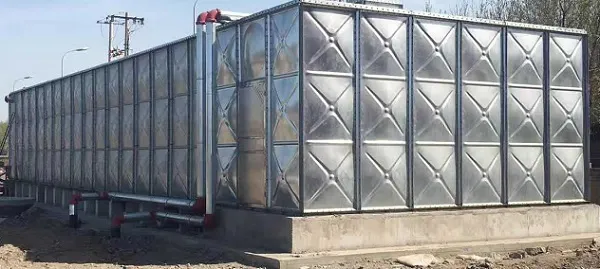loading...
- No. 9, Xingyuan South Street, Dongwaihuan Road, Zaoqiang County, Hengshui, Hebei, China
- admin@zjcomposites.com
- +86 15097380338
- Welcome to visit our website!
Exploring the Benefits and Applications of FRP Bars in Modern Construction Techniques
Understanding FRP Bars Revolutionizing Reinforcement in Construction
Fiber-Reinforced Polymer (FRP) bars have emerged as a revolutionary material in the construction industry, providing a durable and lightweight alternative to traditional steel reinforcement. Composed of a polymer matrix strengthened with fibers—commonly glass, aramid, or carbon—FRP bars are increasingly being utilized in various structural applications, from bridges and parking garages to marine environments. This article explores the benefits, applications, and future potential of FRP bars in construction.
Advantages of FRP Bars
One of the most significant advantages of FRP bars is their resistance to corrosion. Unlike steel, which can rust and degrade in the presence of moisture and chemicals, FRP bars offer exceptional durability under harsh environmental conditions. This property makes them ideal for use in structures exposed to seawater, de-icing salts, and other corrosive elements, dramatically extending the lifespan of the reinforcement without requiring frequent maintenance or replacement.
In addition to corrosion resistance, FRP bars are significantly lighter than steel. This weight reduction can lead to easier handling and transportation during construction, as well as reduced labor costs. The lightweight nature of FRP also contributes to lower overall construction costs, especially in projects where weight is a critical factor, such as in bridges where less load on the supporting structure is advantageous.
Moreover, FRP bars exhibit high tensile strength and are capable of bearing substantial loads without deformation. This strength can often exceed that of conventional steel, making FRP bars a suitable choice for high-performance applications. The non-conductive nature of FRP materials also offers an electrical insulation benefit, reducing concerns about grounding issues in certain structural applications.
Applications of FRP Bars
FRP bars are finding applications in various sectors of the construction industry. In civil engineering, they are used in the reinforcement of concrete structures, providing enhanced durability and performance. Their use in seismic-prone areas is particularly noteworthy, as FRP bars can help design structures that withstand earthquakes without the risk of brittle failure, a common issue with traditional materials.
frp bar

In infrastructure projects, such as bridges and tunnels, FRP bars can significantly improve sustainability by reducing the environmental impact associated with repairs and replacements due to corrosion. Additionally, their use in precast concrete elements allows for innovative design possibilities, integrating strength and aesthetics.
The marine industry also takes advantage of FRP bars for reinforced concrete docks and seawalls, where exposure to saline environments makes corrosion resistance an invaluable property. Their application extends to pavements and slabs where lighter weight can lead to less demand on substructures, enhancing overall stability.
Future Potential
The future of FRP bars in construction looks promising as technological advancements continue to enhance their properties and manufacturing processes. As the industry pushes towards sustainable and resilient infrastructure solutions, the versatility of FRP materials positions them as a key component in building modern cities. Research is ongoing to improve the bonding techniques between FRP bars and concrete, as well as to develop hybrid reinforcement systems that utilize both FRP and traditional materials to optimize structural performance.
Sustainability is another crucial aspect driving the adoption of FRP bars. As awareness of environmental issues grows, the use of materials that reduce the need for repairs and replacements contributes to more sustainable building practices.
Conclusion
In summary, FRP bars are at the forefront of innovation in the construction industry, offering unique properties that confer numerous advantages over traditional reinforcement methods. Their lightweight, corrosion-resistant, and high-strength characteristics make them suitable for a wide range of applications, paving the way for future advancements in civil and structural engineering. As the demand for sustainable and durable infrastructure continues to rise, FRP bars are likely to play an increasingly prominent role in shaping the landscapes of tomorrow.
-
Premium FRP Handrail for All ApplicationsNewsAug.29,2025
-
Low Maintenance FRP Mini Mesh Grating ProductsNewsAug.29,2025
-
Innovative FRP Square Tubes for Modern Industrial SolutionsNewsAug.29,2025
-
FRP Water Storage Tanks Wholesale Solutions for Bulk BuyersNewsAug.29,2025
-
FRP Molded Grating Solutions for Diverse Industrial ApplicationsNewsAug.29,2025
-
Construction Advancements Through FRP Pultruded ProfilesNewsAug.29,2025
-
Why Choose FRP Railings, Guardrails, and Handrail Systems?NewsAug.29,2025
